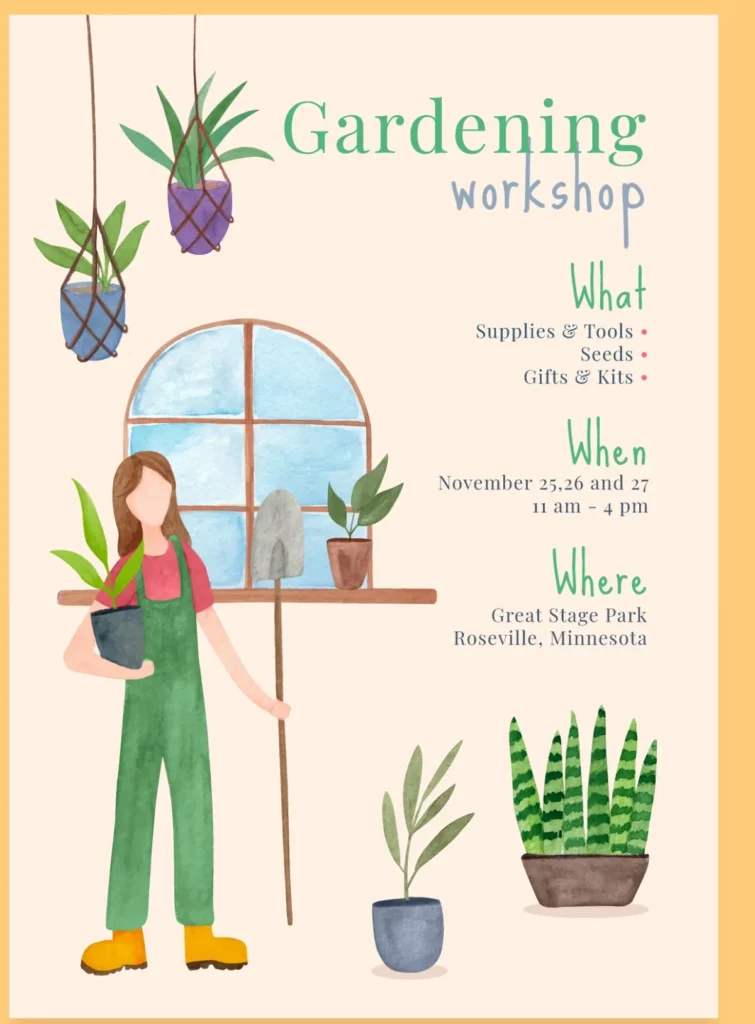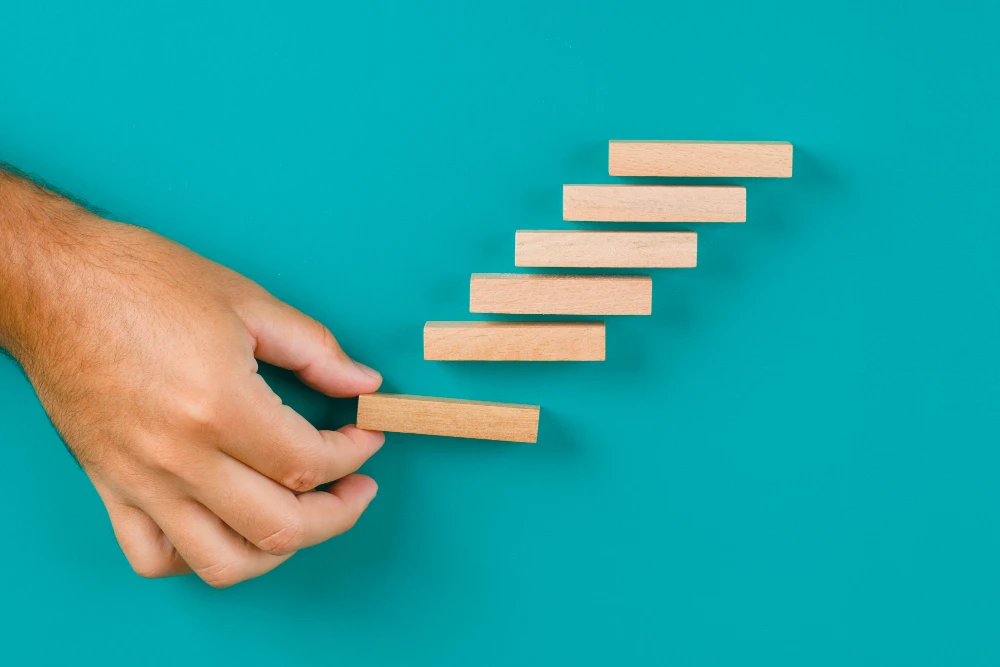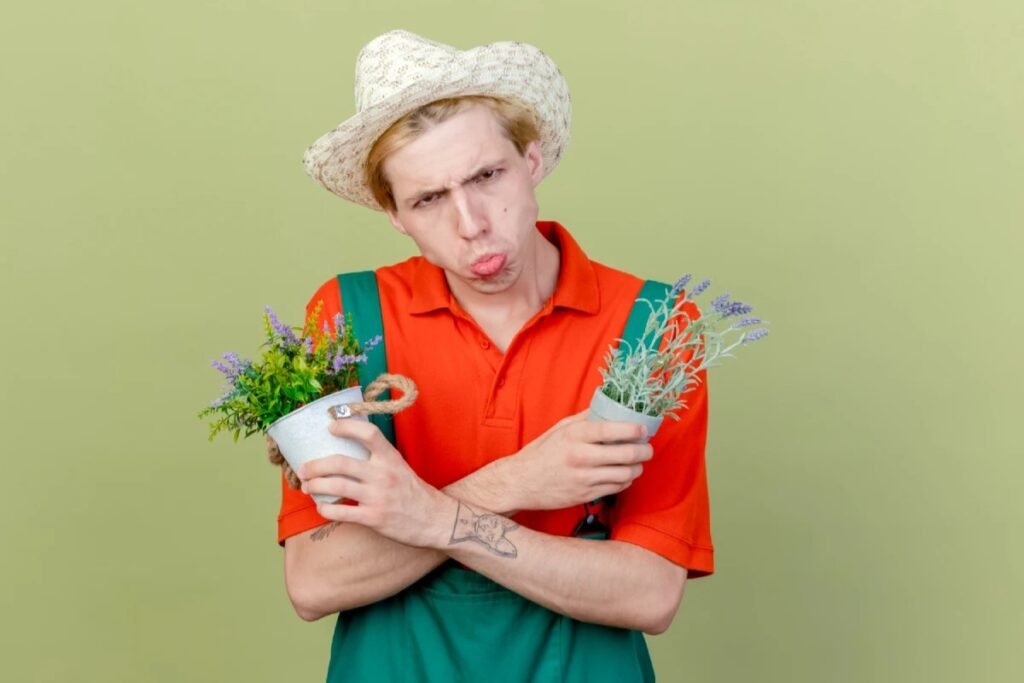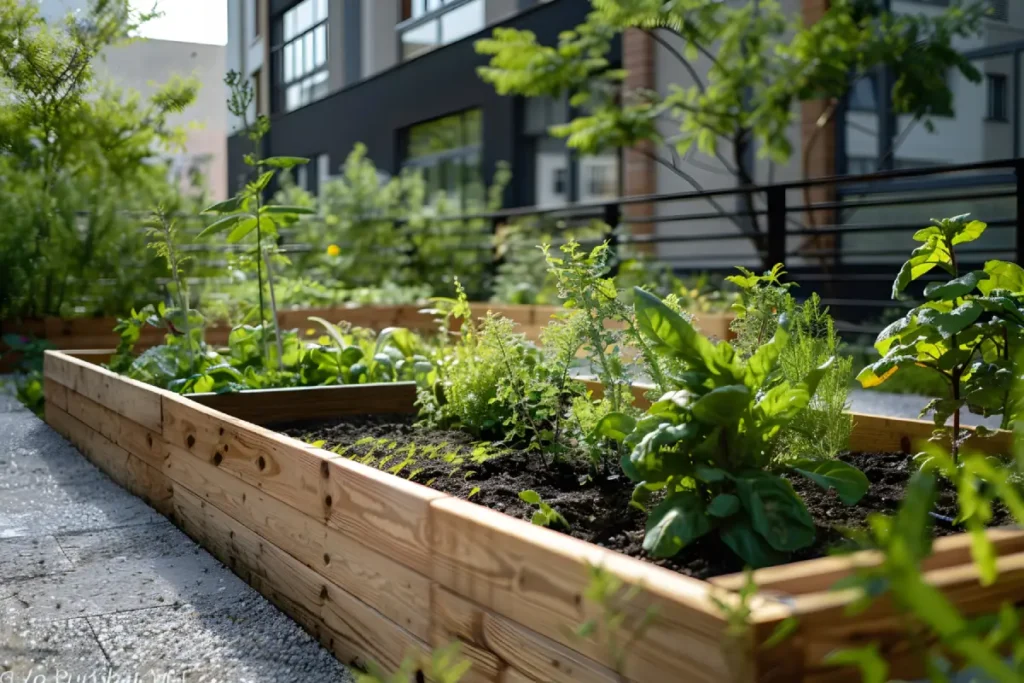Seed Starting Calculator
Planting Schedule:
Seed Starting Tips:
PDF Preview
Your PDF is being generated. This would show a preview in a real application.
- Seed Starting Calculator
- PDF Preview
- What Is a Seed Starting Calculator?
- Why Timing Matters?
- Your Secret to a Thriving Garden
- The Essentials of Seed Starting
- How Seed Starting Calculators Work
- Step-by-Step Guide to Using a Seed Starting Calculator
- Advanced Tips for Expert Gardeners
- Common Seed Starting Issues
- Conclusion: Mastering Your Seed Starting Schedule
- Frequently Asked Questions (FAQs)
If you love gardening, you know timing can make or break your season. Even with the best soil, quality seeds, and green thumb, getting the timing wrong can hurt your harvest. So, how do you get it right? That’s where a seed starting calculator comes in. Think of it like having a gardening expert guiding you, helping you figure out when to start your seeds indoors, so they’re ready for the garden when the weather’s right.

What Is a Seed Starting Calculator?
A seed starting calculator is a simple but powerful tool that creates a personalized planting schedule. You just input three things: your zip code, the plants you want to grow, and the specific needs of each plant. It then uses your area’s average last frost date to tell you the best time to start your seeds indoors. No more worrying about timing—let the calculator do the work for you.
Why Timing Matters?
Timing is everything in gardening. Here’s why:
If you start your seeds too early, you’ll end up with tall, weak seedlings that outgrow their pots, but still can’t go outside because it’s too cold. It’s like having a guest who overstays their welcome. You’re ready for them to go, but they’re not quite prepared to leave.
On the flip side, starting seeds too late leaves you with little time for your plants to mature before the season ends. That means fewer fruits or flowers than you’d hoped for.
But get the timing right, and you’ll see the difference. Your seed will grow strong and healthy, setting them up to thrive once they’re moved outdoors. The right timing is very important for giving your plants the best possible start.
Your Secret to a Thriving Garden
Think of a seed starting calculator as your personal gardening coach. It takes the guesswork out of the process, giving you a custom schedule based on your local climate. No more wondering if you’re planting at the right time, now you’ll know exactly when to start your seeds. These tools use key local data, like your area’s average last frost date, which can be hard to remember, to help you plant confidently.
The Essentials of Seed Starting

Before diving into the calculator, it helps to understand the basics of seed starting. Knowing how seeds grow and what they need can make the process easier. Here’s a quick rundown:
Seed Germination and Growth Stages
Starting a seed is more than just planting it and hoping for the best. There are stages: germination, seedling growth, and plant development. Germination begins when the seed takes in water and begins to sprout. Then, the roots grow downward, and the stem pushes upward, reaching for light. As the seedling matures, it becomes a full-grown plant. Timing is key during each stage, so getting it right is crucial.
What Affects Seed Starting Times?
Seed starting isn’t the same for everyone; it depends on your climate. If you live in a colder region, you’ll need to start your seeds earlier than someone in a warmer climate. Frost dates play a significant role, too. Planting too early in a late-frost area can ruin your plants. The type of plant matters as well. Some, like tomatoes, need more time indoors before being moved outside, while others, like leafy greens, can be started closer to when you’ll plant them outdoors.
Key Terms You Need to Know
As you start seed starting, a few key terms will pop up that you should understand:
- Last Frost Date: This is the last expected frost in your area. It helps determine when it’s safe to move your plants outside.
- Seedling Hardening: Before transplanting your seedlings outdoors, they must gradually adjust to outdoor conditions. This process is called “hardening off” and prevents transplant shock when they enter the garden.
Understanding these terms will help you care for your seedlings and give them the best chance of thriving.
How Seed Starting Calculators Work
Gardening is rewarding, but getting the timing right is crucial. Seed starting calculators take the guesswork out by creating a personalized planting schedule based on your local climate.
What You Need to Get Started
To use a seed starting calculator, you’ll need to provide a few details:
- Last Frost Date: This tells you when the risk of frost is over, and it’s safe to move your seedlings outside.
- Plant Type: Different plants grow at different speeds. Knowing what you’re planting helps the calculator give you accurate advice. For example, tomatoes need more time indoors than spinach.
- Desired Transplant Date: When you want to move your seedlings into the garden, typically when the weather is warm enough.
With these three inputs, the calculator will create a custom timeline for your garden.
How the Calculator Determines Start Dates
Once you enter your information, the calculator uses plant growth rates, local temperatures, and frost dates to determine the best time to start your seeds. It accounts for how long your seeds need to grow before they’re ready to transplant, ensuring your seedlings will be strong and healthy when it’s time to move them outside. No more guessing, just reliable, science-backed timing.
Step-by-Step Guide to Using a Seed Starting Calculator

Now that you know what a seed-starting calculator can do, let’s break down how to use it confidently. Follow all these steps to get your garden off to a strong start:
- Find Your Local Frost Dates: The first step is figuring out your last frost date. This is crucial for timing your seed starts. You can check your local USDA hardiness zone map or use an online tool or app to find this date. If you’re unsure, there are plenty of resources to help.
- Select Your Plant Type and Variety: Next, input the type of plants you want to grow. Different plants have different needs—tomatoes, for example, must be started indoors weeks before spinach. Check your seed packet for timing, and the calculator will create a schedule tailored to your garden’s needs.
- Adjust for Indoor vs. Outdoor Starts: Some plants (like peppers and tomatoes) do better when started indoors, while others (like beans and carrots) can go straight into the ground. Be sure the calculator lets you specify whether you’re starting seeds indoors or outdoors, so it can adjust the timeline accordingly.
- Interpreting the Results: After entering your information, the calculator will give each plant’s start date and suggest when to transplant your seedlings. It will consider your frost-free periods and local climate conditions, providing you with a reliable planting schedule.
Practical Takeaway
Those who like to stay organized should create a physical seed-starting calendar. Write down each plant’s start and transplant dates, and keep them close as you plan your garden. This way, you’ll always know exactly when to start each plant and when to move them outdoors.
By using a seed-starting calculator, you’re setting yourself up for gardening success. It’s like having a personal assistant who understands your climate and helps you get your plants off to the best start. So, trust the process, take a deep breath, and prepare for a bountiful garden.
Advanced Tips for Expert Gardeners

Ready to take your gardening to the next level? Here are some expert tips to help perfect your seed-starting timing and make your garden thrive.
Adjusting for Microclimates and Weather Variability
Your garden might not follow the typical climate patterns of your area. You’ll need to tweak your seed-starting dates if you’re working with a microclimate—like a sheltered spot, near a body of water, or somewhere with unique weather. While calculators provide a solid foundation, make adjustments based on your garden’s conditions. For instance, a sunny, south-facing spot may warm up faster than the rest of the area, allowing you to start your seeds a bit earlier.
Synchronizing Multiple Crop Timelines
If you’re an experienced gardener, you know the importance of staggering your plantings. This allows for a steady harvest all season long. By starting seeds at different times, you’ll get crops in waves instead of everything ripening at once. A well-organized seed-starting planner or calculator can help you track these overlapping schedules. The right timing means you’ll always have something ready to harvest, from early spring greens to late-summer tomatoes.
Integrating Soil Preparation and Fertilizing Schedules
Soil preparation is just as crucial as timing your seeds. Prepare your garden soil a few weeks before planting, ensuring it’s rich, well-drained, and ready to support your seedlings. Fertilizing plays a significant role, too. Align your fertilizing schedule with your seed-starting dates to guarantee your soil is nutrient-rich and prepared for healthy growth. You might even adjust your seed-starting dates based on when the soil will be prepared appropriately.
Using Technology: Apps and Automation for Seed Starting
Modern tools can make seed starting easier for tech-savvy gardeners. Mobile apps can sync with your calendar to remind you when to start, repot, or transplant your seeds outside. Some apps also integrate weather forecasts, adjusting your planting schedule based on real-time temperature changes. These tools can help you manage multiple crops and keep everything running smoothly, especially when juggling different planting and harvesting timelines.
Common Seed Starting Issues

Even with the best planning, things don’t always go as expected. Gardening mixes science with patience, sometimes throwing you a curveball. Here’s how to troubleshoot when things don’t go as planned:
What to Do if Seeds Don’t Germinate on Time
One of the most frustrating things in gardening is waiting for seeds to sprout, only to get nothing. First, check the temperature. Many seeds need warmth to germinate—if it’s too cold, they may not grow. Ensure your growing area is warm enough and your seedlings get enough light. If everything looks right but germination is still slow, the seeds might be too old or improperly stored. Use fresh seeds and adjust your planting schedule to match their ideal conditions.
Adjusting Start Dates After Unexpected Frosts or Heat Waves
The weather can be unpredictable. If an unexpected frost or heat wave hits, you must stay flexible. If frost catches you off guard after starting your seeds, you may need to keep them indoors a little longer or protect them with a cold frame. If a heat wave strikes, provide shade or move your seedlings out of the direct sun during the hottest parts of the day. Keep your frost date calculator handy and adjust your seed-starting timeline to protect your plants.
Handling Disease and Damping-Off Problems
Damping-off, a common fungal disease, causes seedlings to wilt and die. To avoid this, always use a sterile seed-starting mix and be cautious not to overwater. Good airflow is most important to preventing mold and fungi. If you see any sign of disease, remove the affected seedlings immediately to stop the spread. Another tip: plant fewer seeds at a time so each seedling has enough space to grow and thrive.
Conclusion: Mastering Your Seed Starting Schedule
A well-planned seed-starting schedule is the foundation for a successful garden. With a seed-starting calculator, you’ve already taken the first step toward success. By carefully planning your start dates, you’ll set the stage for healthy, thriving plants that will reward you all season long.
Remember, gardening isn’t an exact science. Don’t be afraid to experiment, adjust, and track your results. Every season offers a chance to learn; even experienced gardeners continue refining their methods.
Finally, connect with other gardeners. Sharing tips, experiences, and advice helps you grow as a gardener and part of a group of people with a passion for growing.
With your seed-starting schedule, you’re ready to take on the season. Let’s get growing! 🌱
Related Calculator
Frequently Asked Questions (FAQs)
What is a seed starting calculator?
A seed starting calculator is a tool that helps gardeners determine the best time to start seeds indoors based on their local climate. It determines your area’s average last frost date, providing an optimal planting schedule.
How do I use a seed starting calculator?
To use a seed starting calculator, you’ll typically enter your location (either by zip code or city) and the types of plants you’re growing. The calculator will then tell you when to start seeds indoors to be transplanted when the weather is right.
When should I start seeds indoors?
The timing for starting seeds indoors depends on the plant variety and your local climate. Generally, you’ll want to start seeds indoors 6-8 weeks before your area’s average last frost date. You can find this date using a seed starting calculator or by checking local gardening resources.
How do I find my last frost date?
To find your last frost date, you can look up historical climate data for your area or use online tools, such as gardening websites or apps. Many seed starting calculators automatically use this information when you input your location.
Can I use a seed starting calculator for any location?
Yes, seed starting calculators work for a wide range of locations. Most calculators use data based on average frost dates for specific regions, so they can be customized to work wherever you are. However, it’s essential to consider microclimates that might affect your area.
What are the benefits of using a seed starting calculator?
The main benefit of using a seed-starting calculator is ensuring you start seeds at the right time for optimal growth. This helps prevent issues like weak plants or missed planting seasons. It also saves time and resources by giving you a clear planting schedule tailored to your local climate.

